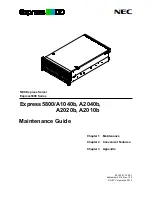
XYR301E Wireless Ethernet
User Manual
Page 58
April 2012
WDS Connections are made by adding one or more “Virtual Modules” to an Access Point (as illustrated in the diagram
at the start of the section). Each virtual module can be configured with one of the standard wifi operating modes
(Access Point or Station) or a non-standard Point to Point mode.
Access Point and Station virtual modules allow for the possibility of dynamically created connections (based
on SSID) and support WPA Encryption. A combined maximum of 5 AP and STA virtual modules can be
configured per unit.
Point to point mode virtual modules provide static connections (based on MAC addresses), and cannot support
WPA Encryption. Point to point virtual modules should only be used for establishing WDS connections with
third party Access Points that do not support standard WDS operation.
There are many different ways to setup wireless networks; often it depends on the devices you wish to connect and the
existing network topology.
The following pages show some examples of how to connect devices into different types of systems.
3.11.1 Example – Extending range using WDS
One of the most common uses for WDS is to extend the range of the wireless network using repeaters. The diagram
above illustrates a simple example where the four Access Points are all at fixed locations (each of the Access Points
could, of course, have one or more client/stations connected). Since the locations are fixed, we can avoid the overhead
of using the Bridge Spanning Tree protocol here by configuring fixed WDS links to ensure that each Access Point will
only connect to the next Access Point in the chain. Any number of additional intermediate repeaters could be added to
the chain in a similar way.
Site B WDS Configuration 1
The WDS configuration for unit B is shown above (this page is accessible via the
Repeaters
link from the
configuration web pages). Site B is acting as an Access point for Site A, and is a client to Site C, likewise Site C is
acting as an Access Point for Site B, and a Client for Site D. Since this example is a bridged network i.e. all devices on
the same IP network and each link is using a different SSID, there is no possibility of loops (i.e. multiple paths to the
same location) therefore we do not need to incur the overhead of enabling STP (bridge spanning tree protocol).
We specify the devices at the other end of the WDS links by SSID only –MAC addresses can be used to specify point-
to-point links to third party devices which do not support meshing via SSID.
Содержание XYR301E
Страница 2: ...Page ii April 2012 ...
Страница 18: ......
















































